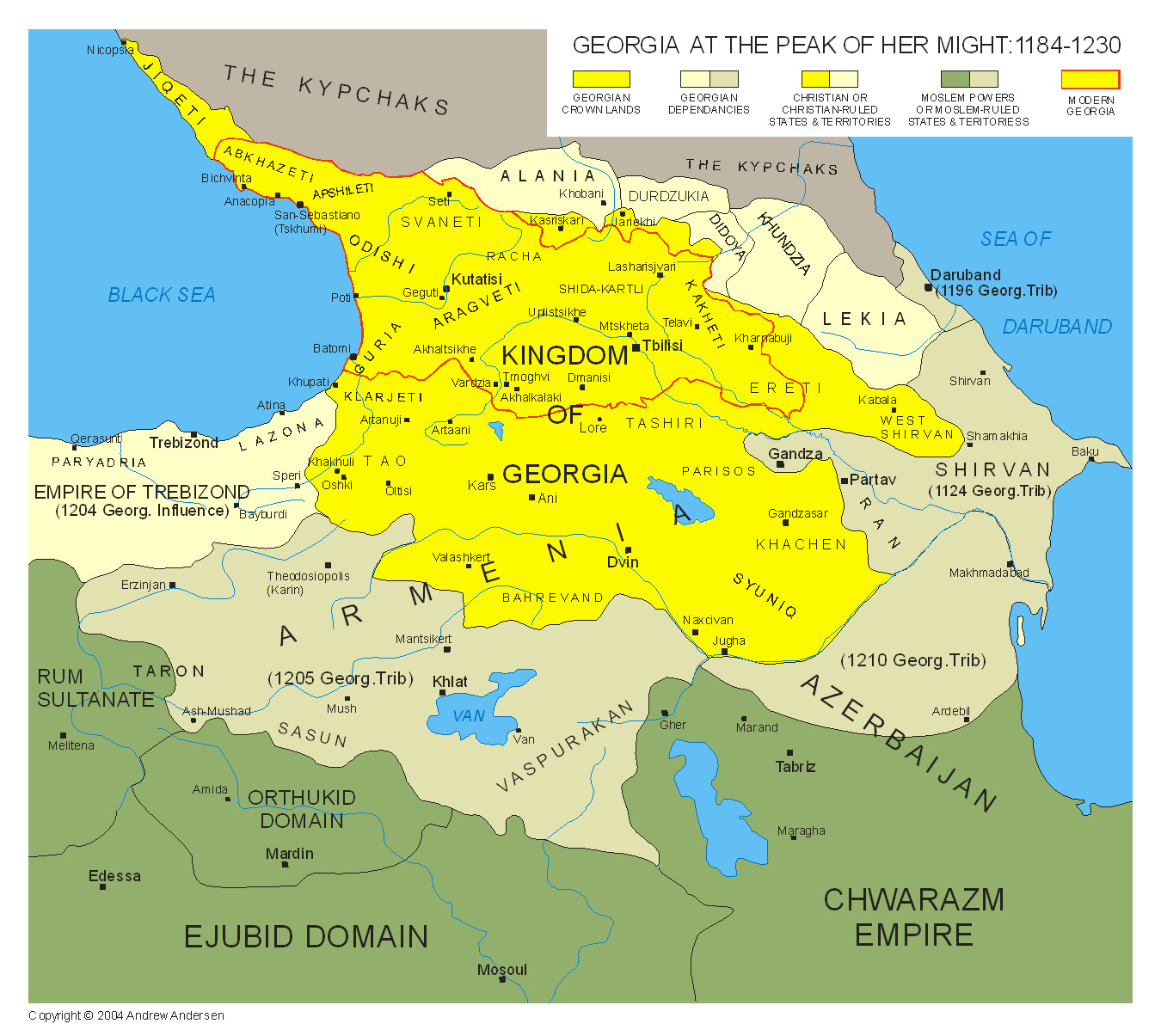 |
|
The reign of Queen Tamar represented the peak of Georgia’s might in the whole history of the nation. In 1194-1204 Tamar’s armies crushed new Turkish invasions from the south-east and south and launched several successful campaigns into Turkish-controlled Southern Armenia. As a result, most of Southern Armenia, including the cities of Karin, Erzinjan, Khelat, Mush and Van, came under Georgian control. Although it was not included in the lands of the Georgian Crown, and was left under the nominal rule of local Turkish Emirs and Sultans, Southern Armenia became a protectorate of the Kingdom of Georgia.
The temporary fall of the Byzantine Empire in 1204 to the Crusaders left Georgia as the strongest Christian state in the whole East Mediterranean area. The same year Queen Tamar sent her troops to take over the former Byzantine Lazona and Paryadria with the cities of Atina, Riza, Trebizond, Querasunt, Amysos, Kotyora, Heraclea and Sinopa. In 1205, the occupied territory was transformed into the Empire of Trebizond and Tamar's relative Prince Alexios Komnenos was crowned as Emperor. The Empire of Trebizond was heavily dependent on Georgia for more than two hundred years. In 1210 Georgian armies invaded northern Persia (modern day Iranian Azerbaijan) and took the cities of Marand, Tabriz, Ardabil, Zanjan and Qazvin, placing part of the conquered territory under a Georgian protectorate. This was the maximum territorial extent of Georgia throughout her history. Queen Tamar was addressed as “The Queen of Abkhazians, Kartvels, Rans, Kakhs and Armenians, Shirvan-Shakhine and Shakh-in-Shakhine, The Sovereign of the East and West”. Georgian historians often refer to her as “Queen Tamar the Great”.
The period between the early 12th and the early 13th centuries, and especially the era of Tamar the Great, can truly be considered as the golden age of Georgia. Besides the political and military achievements, it was marked by the development of Georgian culture, including architecture, literature, philosophy and sciences.
|






